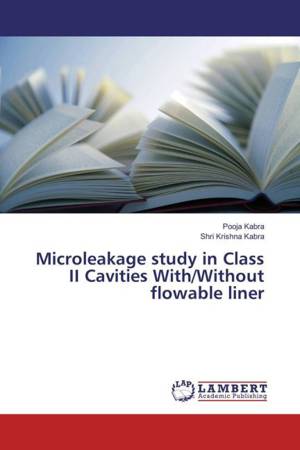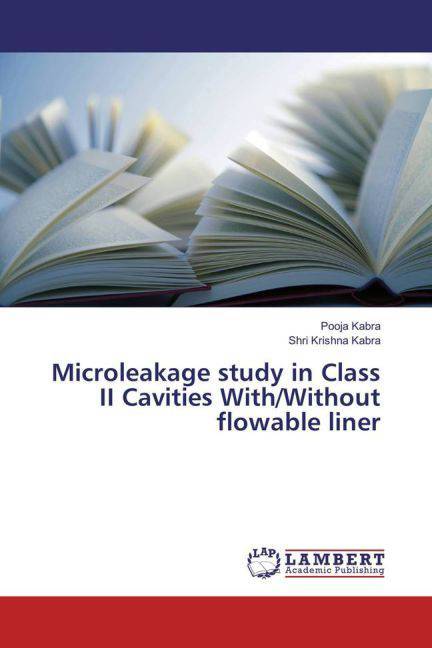
- Afhalen na 1 uur in een winkel met voorraad
- Gratis thuislevering in België vanaf € 30
- Ruim aanbod met 7 miljoen producten
- Afhalen na 1 uur in een winkel met voorraad
- Gratis thuislevering in België vanaf € 30
- Ruim aanbod met 7 miljoen producten
Zoeken
Microleakage study in Class II Cavities With/Without flowable liner
Pooja Kabra, Shri Krishna Kabra
Paperback | Engels
€ 28,45
+ 56 punten
Omschrijving
With the growing demands in esthetic dentistry composites are presently material of choice for direct restorations.Unfortunately polymerization shrinkage in composites while curing induces stress at tooth/restoration interface leading to gap formation.This marginal microleakage remains predominant cause of composite restoration failure.Present study is done to assess microleakage in class II cavities at gingival margin which is the most common problem encountered.With the advent of low viscocity resins ,which can be adapted as cavity liner/base the problem of microleakage can be grossly reduced.Present study examines microleakage along gingival margin in class II cavity with two different type of composite materials when used with/without flowable resin liner.
Specificaties
Betrokkenen
- Auteur(s):
- Uitgeverij:
Inhoud
- Aantal bladzijden:
- 84
- Taal:
- Engels
Eigenschappen
- Productcode (EAN):
- 9783659904028
- Uitvoering:
- Paperback
- Afmetingen:
- 150 mm x 220 mm

Alleen bij Standaard Boekhandel
+ 56 punten op je klantenkaart van Standaard Boekhandel
Beoordelingen
We publiceren alleen reviews die voldoen aan de voorwaarden voor reviews. Bekijk onze voorwaarden voor reviews.











